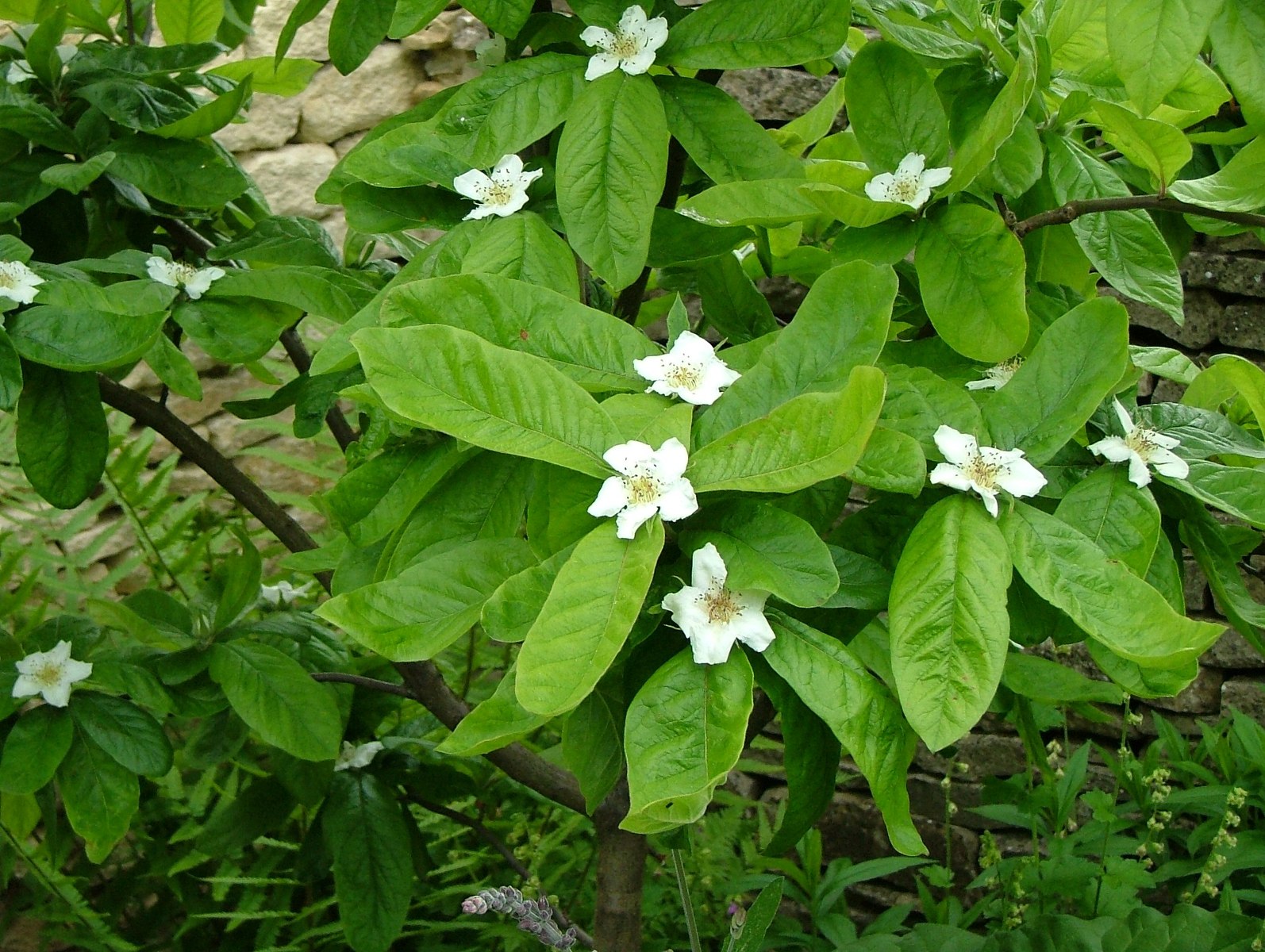Mespilus germanica
Medlar
Species Tolerances
- Drought Tolerance: High
- Shade Tolerance: Yes
- Waterlogging Tolerance: Low
- Frost Tolerance (trees from warmer climates may be frost tolerant, but their flowers may not be): Yes
- RHS Hardiness: H6
- Optimum Conditions for Growth:
Tolerate a wide range of soil, sandy to clay & chalk, though no strong dependence on acid or alkaline soil pH. Grows best on fertile, loamy soil on sheltered sites and in full sun. Closely related to quince and apple, Medlar are an easy to grow small tree and requires no pruning. Historically grown in Britain as an orchard tree. - Susceptibility to Pest/Disease:
No major pest or disease at present

Mespilus germanica/ Mel Etitis/ https://creativecommons.org/licenses/by-sa/2.5/deed.en
Service to Pollinators
- Summary of Service to Pollinators:
The shallow, open flowers produce plenty of nectar and pollen. If planted widely enough could contribute to honey production. - Nectar Value to Pollinators: 3 (of 0-3)
- Honeydew Value to Pollinators: 0 (of 0-3)
- Pollen Value to Bees: 3 (of 0-3)
- Flowering Period: May-Jun
Risks
- Human Toxicity: Non-toxic
- Livestock Toxicity: Non-toxic
- Invasive Risk: No
- Suckering: No
Products
- Edible Fruit: Yes
- Edible Leaves: Yes
- Edible Sap: Yes
- Edible Seeds: Insufficient Data
- Honey, major source in UK: Yes
- For any medicinal potential, see 'Further Details' below.
- Timber: No
- Livestock Fodder: No
- Other Products:
Medlar fruit, grown in Britain before the arrival of sugar, a popular sweet treat. Fruit, leaves and bark rich in vitamin C were traditionally used to aid to digestion. and jelly is still eaten today. As the climate warms has potential to produce honey as a major source.
Utility
- Nitrogen Fixation: No
- Organic Matter Accumulation: Yes
- Phytoremediation: Yes
- Deacidification: Insufficient Data
- Windbreak: No
- Soil Erosion Control: Yes
- Shade or Shelter: Yes
- Plant Support: Insufficient Data
- Integrated Pest Management: Insufficient Data
- Wildlife Value: Yes
- Wildlife Value Summary:
Low value general biodiversity, only fruit and seed for birds and mammals. High value to pollinators. - Graduated Nativeness Classification ⓘ: 2 (of 1-10)1. Historic Native
2. Historic Introduction
9. Neutral Introduction
Further Details
Adaptable to warmer climate. As the climate warms has potential to produce honey as major source. Fruits are picked from late October to November and stored somewhere cool for a few weeks until ‘bletted’ (looking rotten) before eating. These were a sweet delicacy in medeival times, rich in vitamin C. Today a revival could be seen as they are a healthy alternative to sugar.